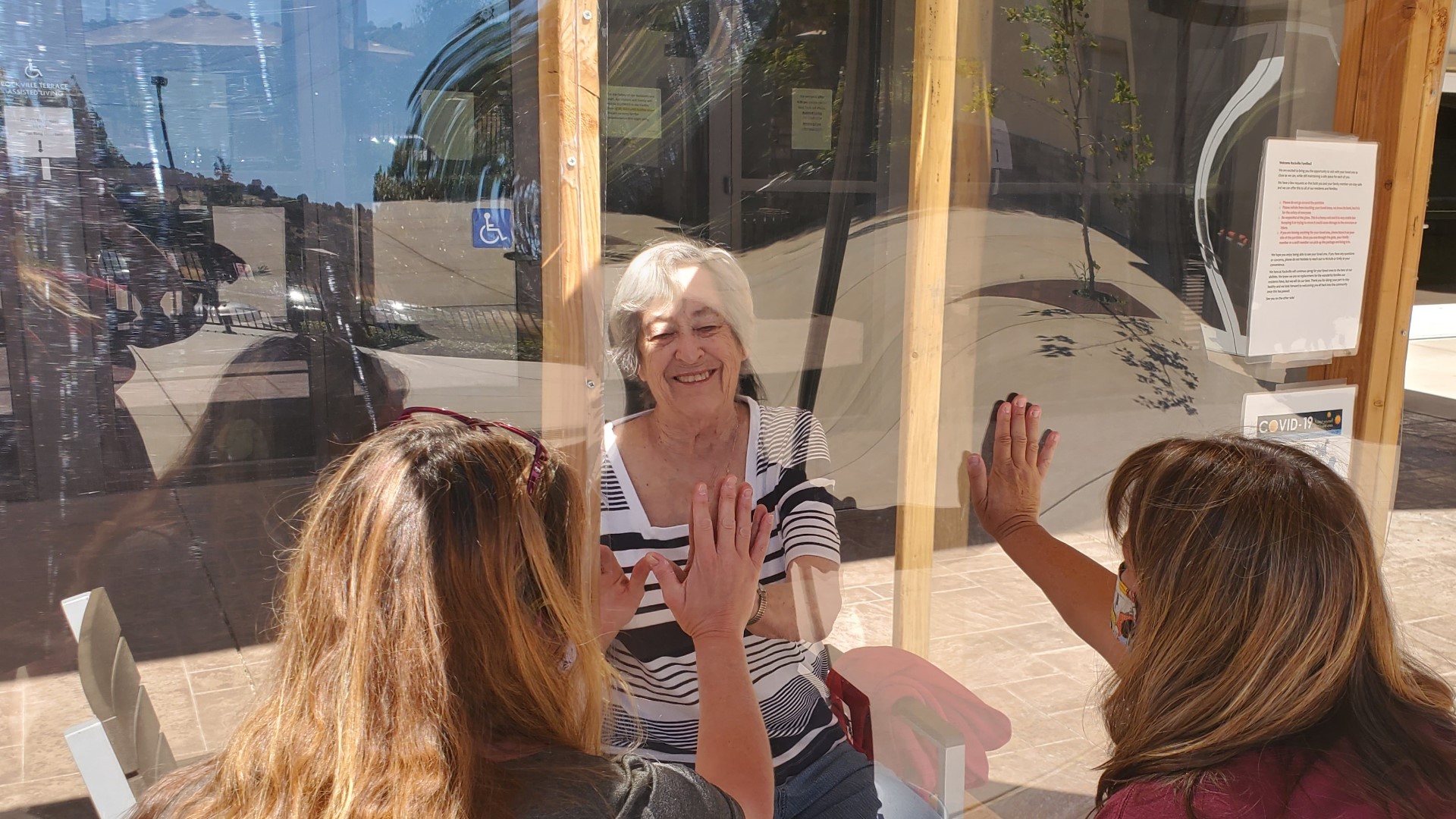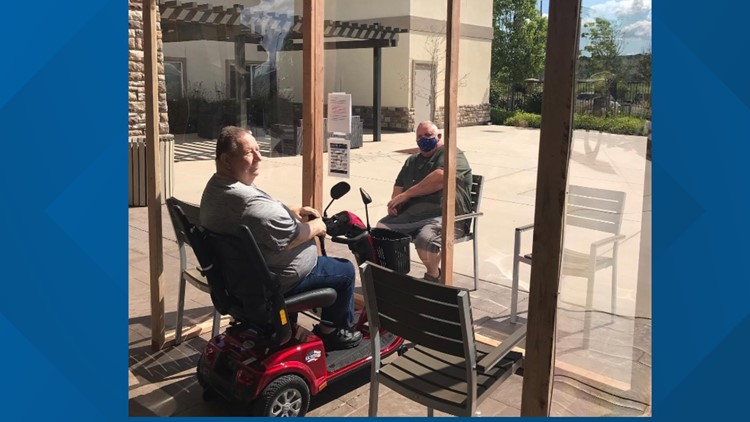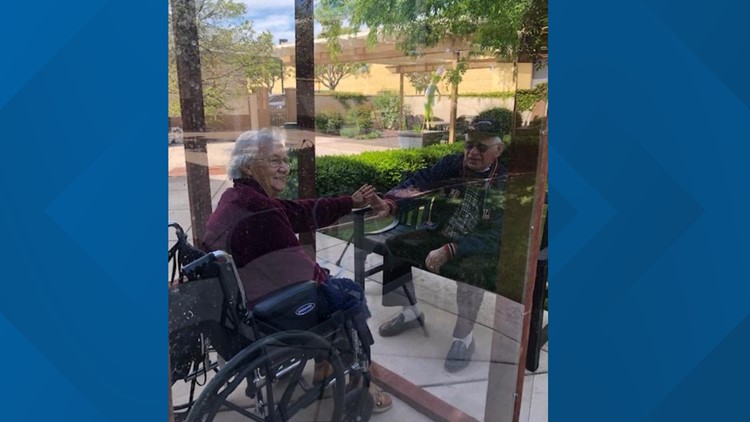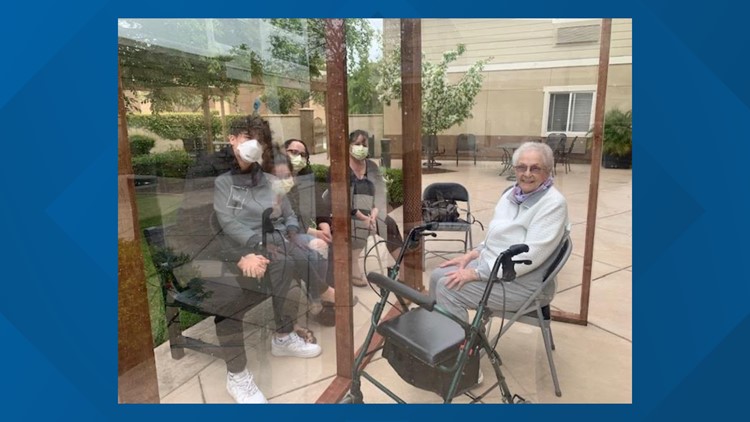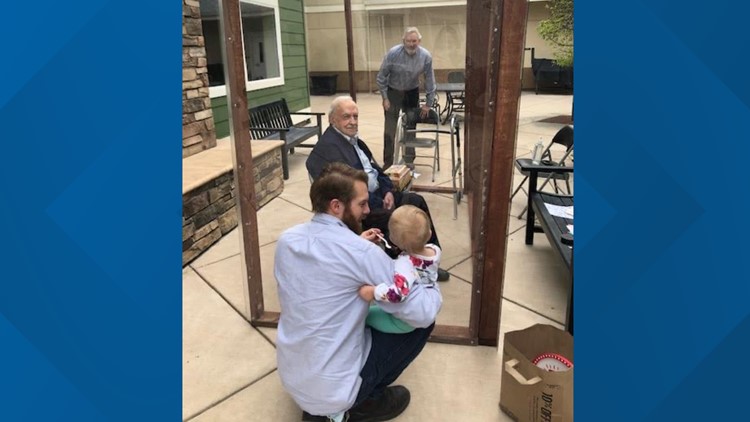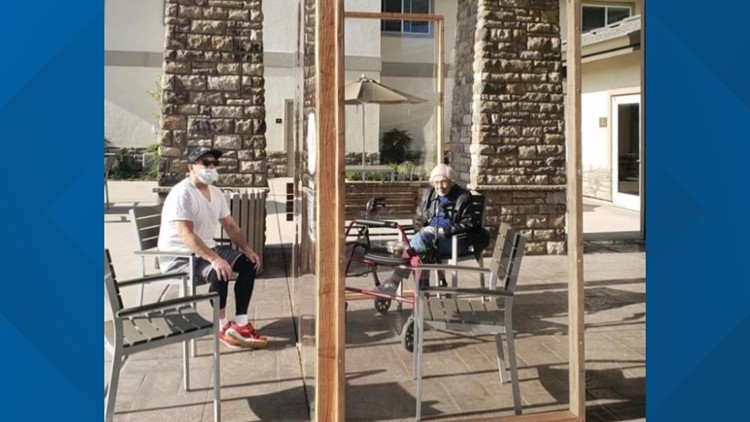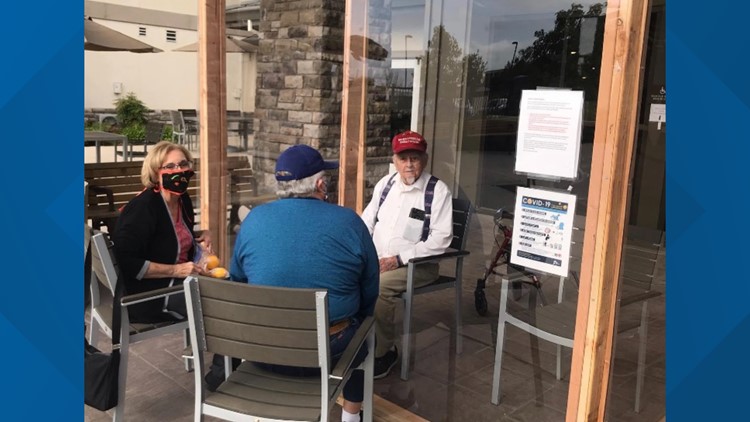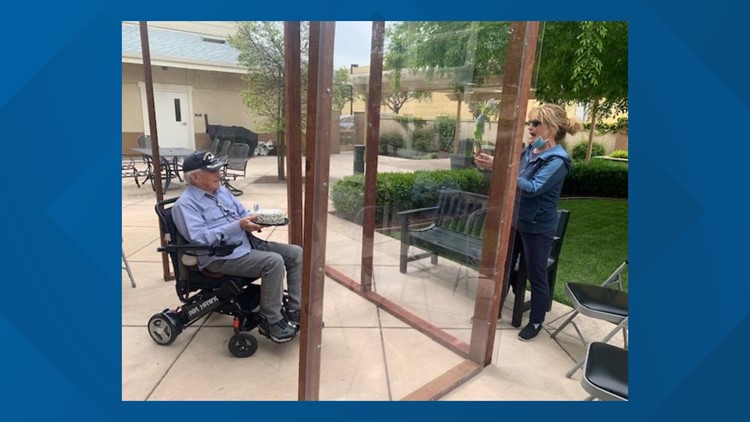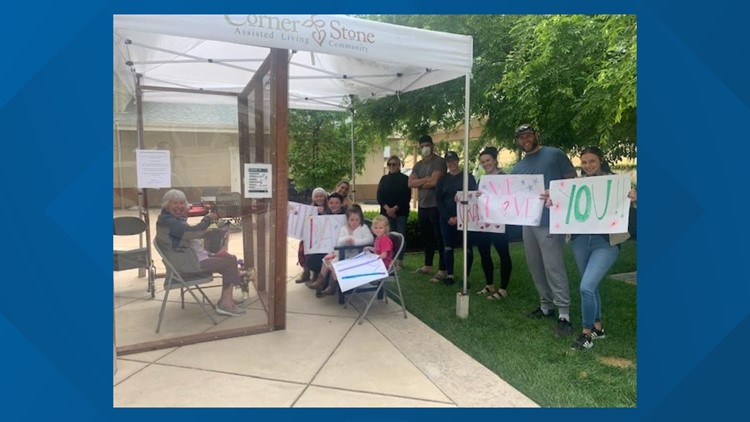FAIRFIELD, Calif. — California resident Heather Orr still clings to the memory of the last time she touched her 80-year-old grandma, Diane Waters, in early March.
That month, the threat of COVID-19 abruptly halted her family’s weekly visits to Waters’ assisted living facility, Rockville Terrace Senior Living, in Northern California.
“I had been cherishing that last hug we had — not realizing what the next week would bring for us, for her, for the world,” said Orr, 29, who lives in Fairfield, California.

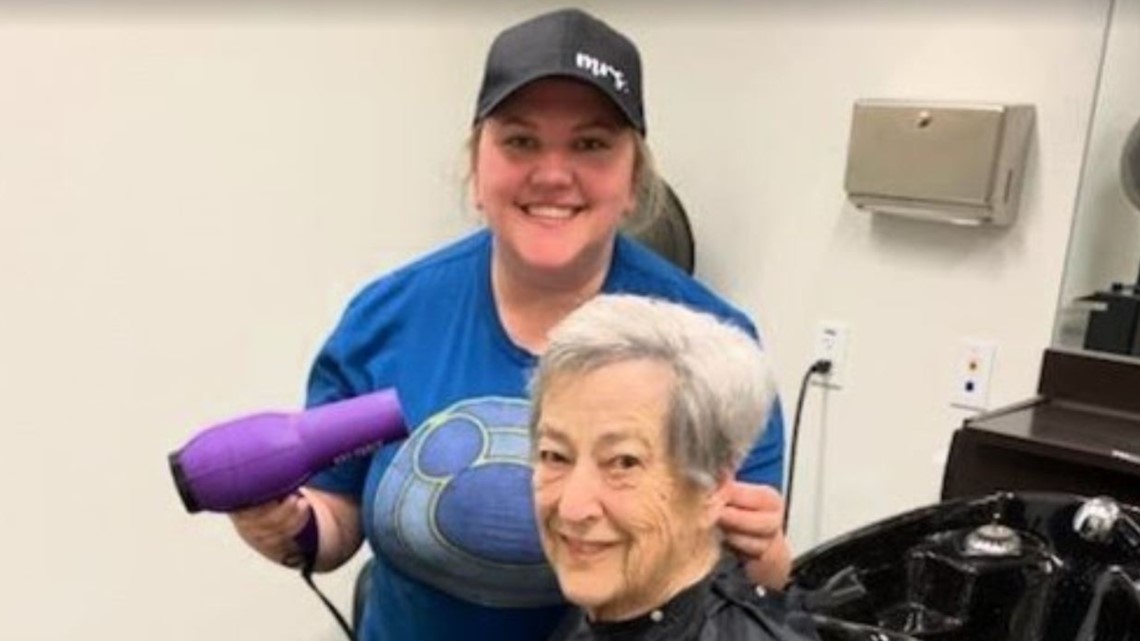
Families in Washington and across the country faced a similar fate as nursing homes and other long-term care facilities restricted visitors to protect vulnerable residents and staff from infection.
The situation has forced long-term care facilities to scramble to help residents communicate with their family members, and it’s led desperate families to seek out creative ways to check in on their elderly loved ones, like by visiting them through a window.
For weeks, Orr traded bingo games and breakfasts with her grandma for video chats and phone calls. But for both her and Waters, who lives in the facility’s memory care unit, technology alone doesn’t cut it.
“She cried the whole time. She didn’t understand why we were in this (Facetime) box or why she couldn’t put her hand up and touch us or why she had a hard time hearing us,” Orr said. “It was very devastating because I was afraid of her feeling like we didn’t want to see her or feeling kind of abandoned.”
Jason Reyes, who manages Rockville Terrace and six other long-term care facilities in California, said he was troubled by the emotional toll the situation was taking on residents and their families. So he went to work in his home garage and masterminded a solution that allowed Waters to once again sit face to face with Orr and the rest of her family.
Using large sheets of Plexiglas and slats of wood, Reyes built three 8-by-8 feet visitation booths and installed them outside of Rockville Terrace Senior Living and two of his other long-term care communities.
In April, residents’ family members began making 30-minute and one-hour appointments to use the booths, which separate residents from their guests with a Plexiglas barrier on three sides.
“This could be the future of visitation for the foreseeable future,” Reyes said, adding that medical professionals examined his Plexiglas booths before he opened them up for visits. “We feel this is a very reasonable approach for protection just as all the precautions that we have in place around COVID.”

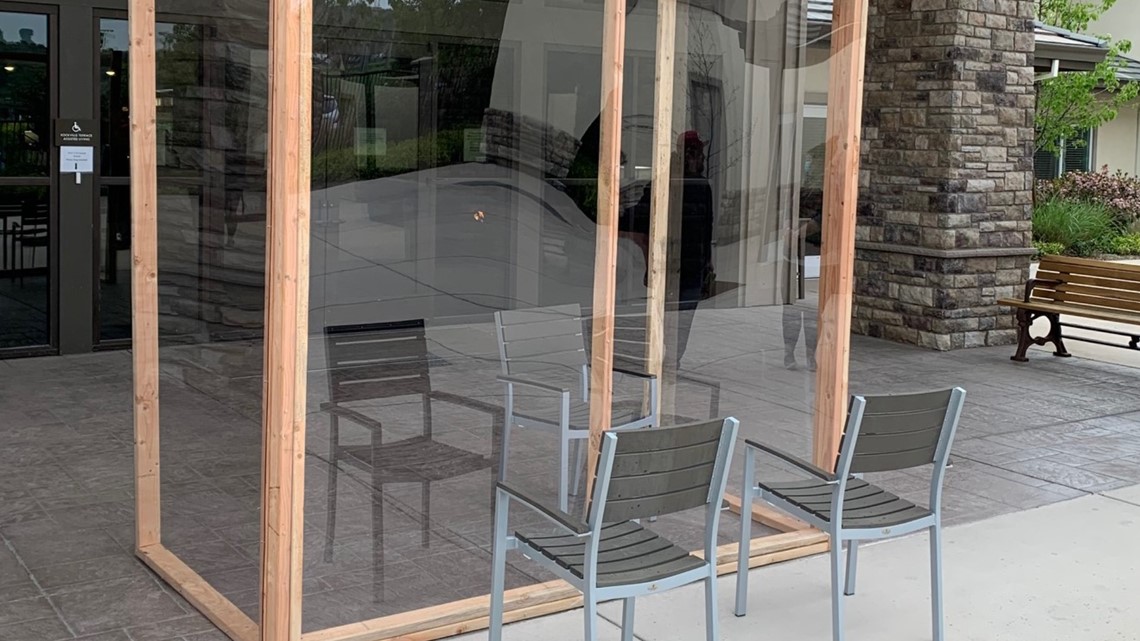
Reyes said they’ve had no cases of COVID-19 at the three communities using the Plexiglas booths, and they’ve facilitated about 400 visits with approximately 200 residents.
Guests are required to wear face masks and they’re not permitted to physically touch their loved ones. Staff members also thoroughly disinfect the booths between each visit, Reyes said.
“It’s not the same as being able to come into the community, hang out in their mom or dad’s apartment, have a meal with them. These are smaller, shorter, incremental visits, but being able to do these important things in person has had a dramatic impact,” Reyes said. “For many family members, this is just enough to hold them over.”
Plexiglas visitations at long-term care facilities in California
Orr may still be clinging on to that memory of the last time she hugged her grandma, but now she’s also cherishing something else: the memory of the first time she saw Waters in person again through the Plexiglas wall.
“We were all crying just walking up to see her because we were all like, 'Oh, now we can see her in the flesh! She’s safe! She’s good!'” Orr said.
Orr said visits using the booth feel more normal than her exchanges with Waters on Facetime. She’s able to share memories and photos with her grandma by simply holding up her phone to the Plexiglas.
“To be able to blow a kiss and have that face to face (interaction), it feels a bit more natural,” she said. “Knowing that any moment of the day, we could call over and e-mail and say, ‘Hey, we need to see her,’ is huge.”
Orr said she realizes being able to sit in person with her grandma is a luxury during this pandemic, but she hopes it soon becomes the norm for other families across the nation.
“I know there are people across the United States right now that are just begging for some sort of solution other than Facetime or phone calls or text,” Orr said. “I feel like there is kind of a moral responsibility from these different facilities to kind of put something like this into place.”

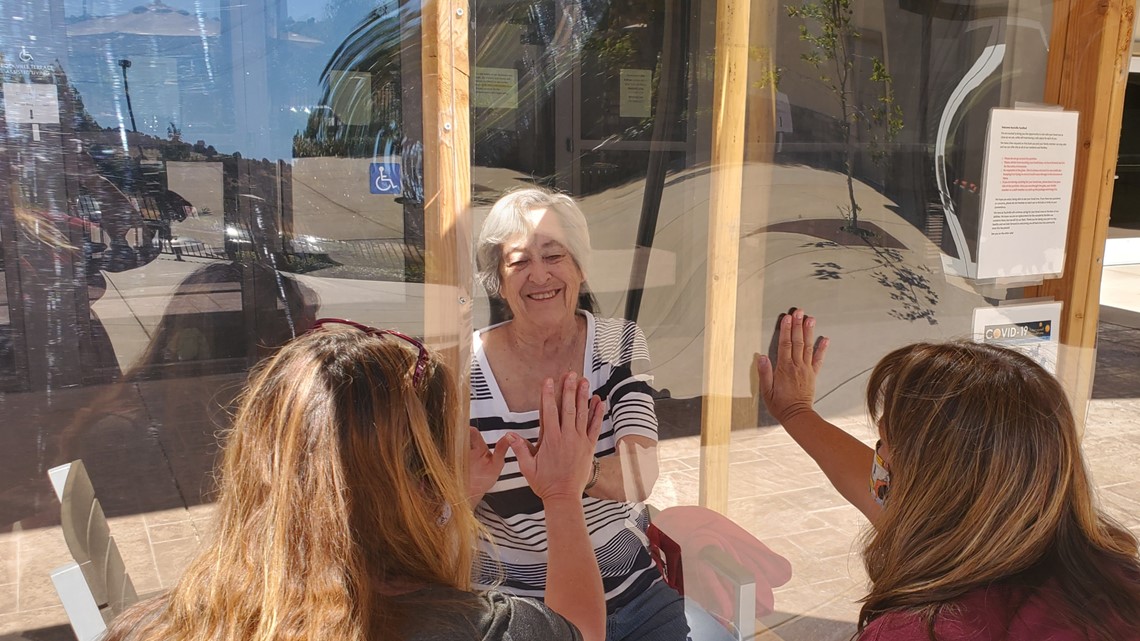
The idea is catching on at other facilities across the country. Reyes said dozens of people have contacted him for advice on replicating the Plexiglas booths. Long-term care facilities in states like Ohio, Pennsylvania and Kentucky have already installed them.
“I had no idea that it was going to make it across the country and get all these people excited about it,” Reyes said. “To see people sending photos of their cubicles they are building, it’s just been such a tremendous joy.”
A spokesman for the Washington Department of Social and Health Services (DSHS), the agency that licenses long-term care facilities in Washington, said Plexiglas structures are not “explicitly forbidden” under the state’s current rules. But he said DSHS is not aware of any long-term care facilities in the state that have done this or requested permission to build one.

